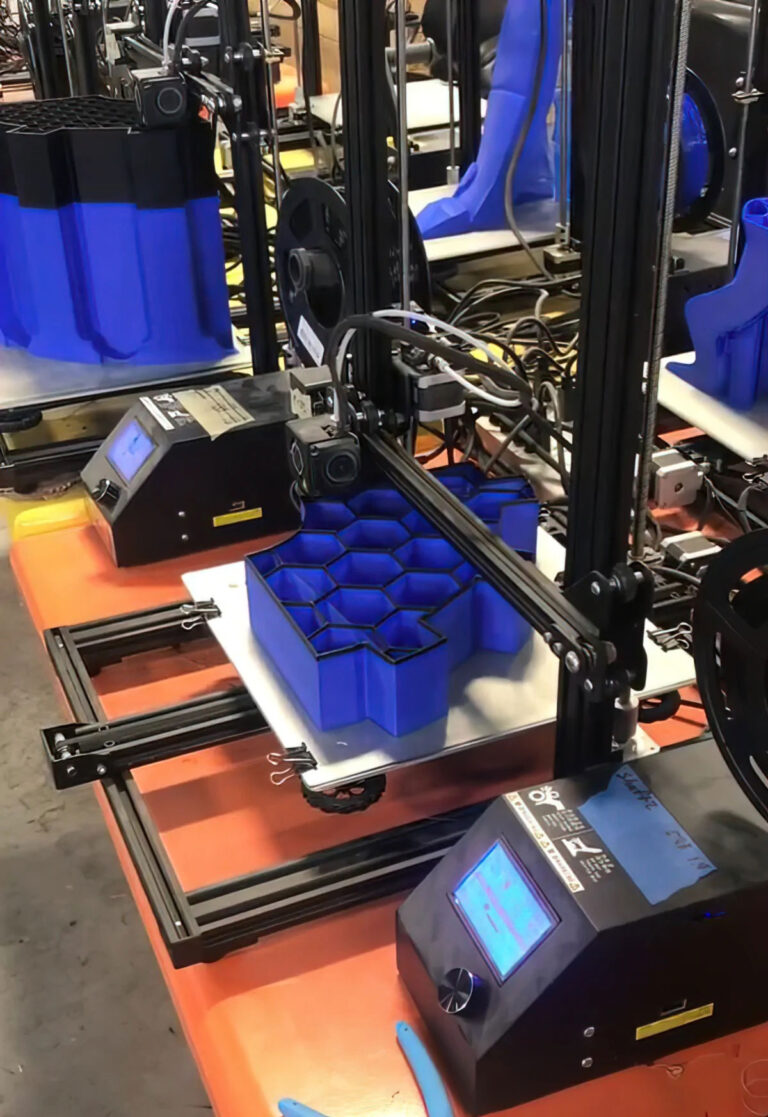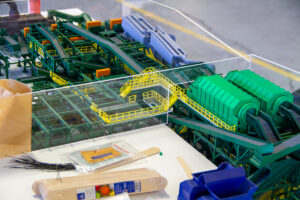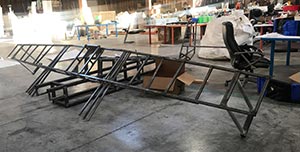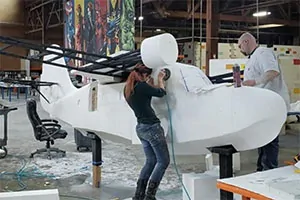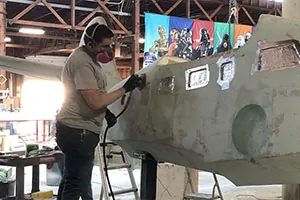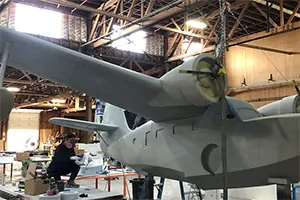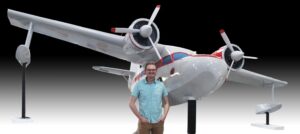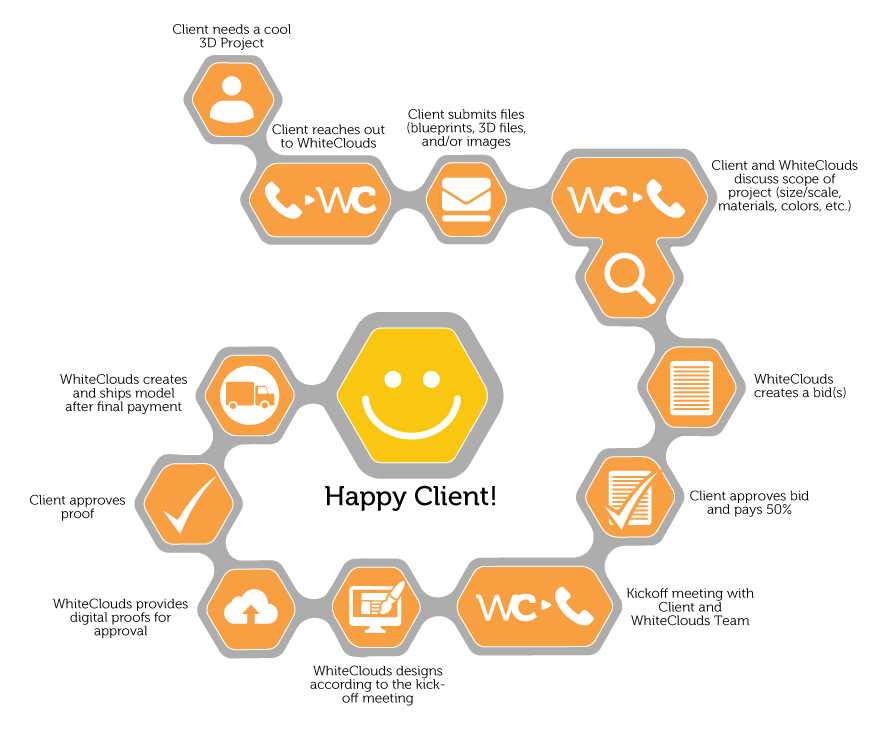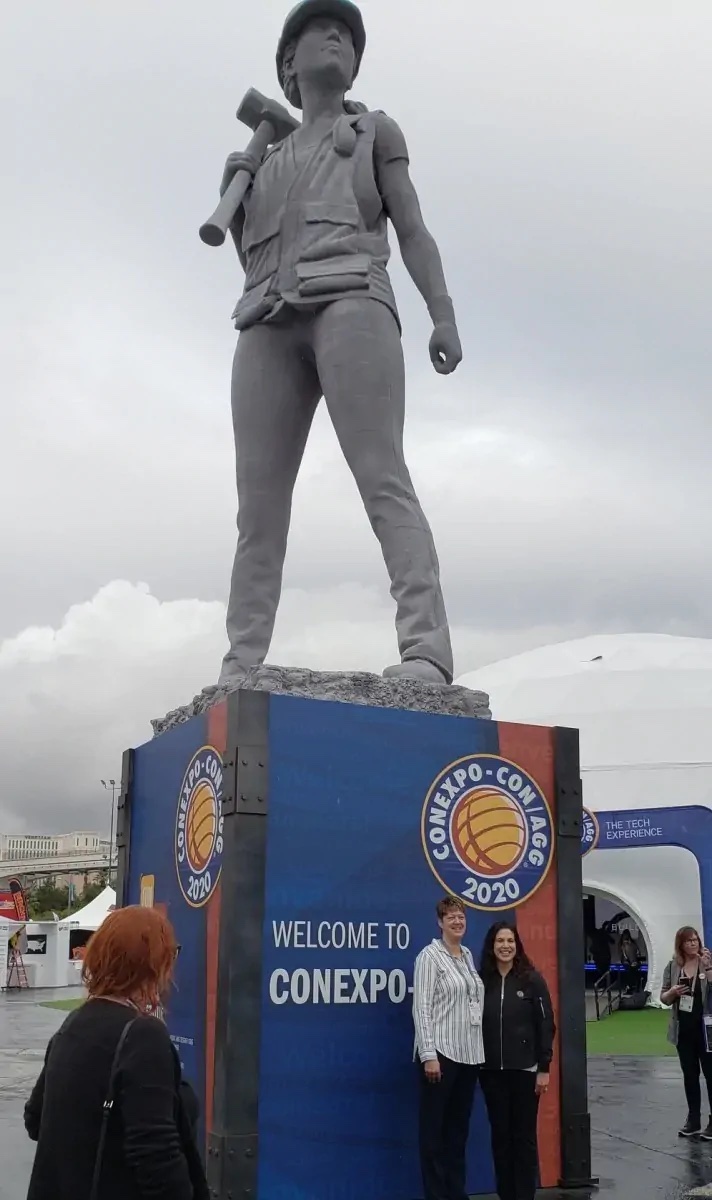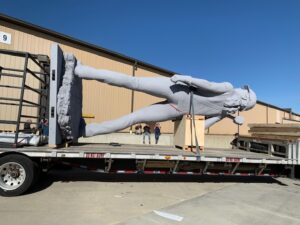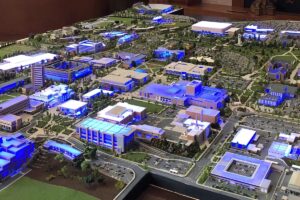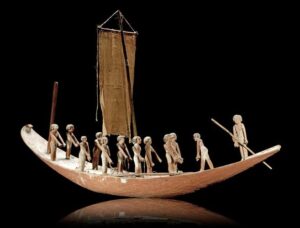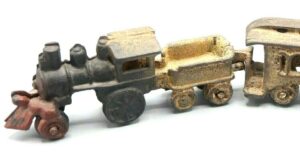Miniature 3D Models
Miniature 3D Models
High-quality custom miniature scaled down models for businesses and individuals
High-quality custom miniature scaled down models for businesses and individuals
Table of Contents
Small scale + technology:
Tiny objects create huge reactions. WhiteClouds provides on-demand, custom next-gen 3D fabrication services. We can create anything you dream up — in miniature.
All custom miniature models are high-quality and produced exactly to your specs. We use modern 3D printing methods along with hands-on building methods to produce engaging and influencing miniature models.
Miniature 3D Model Project Gallery
How are Miniature Models Used?
All custom miniature models are high-quality and produced exactly to your specifications. We use modern 3D printing methods along with hands-on building methods to produce engaging and influencing miniature models.
Miniature models are often used by companies or product inventors to represent a new idea or concept. Or, some utilize miniature production technologies to test out manufacturing, tool, or equipment designs. And, some miniatures are used for fun, such as character models, toys, or advertising tools.
Anything made big can be made small. And, in many cases, it is smarter to make something small first. Miniature models are small representations of large objects or large items not yet created. For example, it is likely that a mini Mini Cooper was created well before the first Mini Cooper rolled out of the factory. Miniatures are a good way to demonstrate and test ideas.
Manufacturing: Tools and parts, agriculture equipment, transportation, industrial models, machinery, automotive
Building small representations of large concepts such as industrial equipment, machinery, or manufacturing equipment layouts helps companies visualize, test, and demonstrate large ideas. We build small-scale designs using 2D images and computer simulated designs. To help communicate functionality, models can include moveable parts, cutaway views, lighting features, and interactive features. See more industrial models.
Example: Large equipment models are created in a small form for showcasing design ideas at trade shows or conventions so buyers and investors can better understand how the full-sized object may meet their needs.
Trade shows and demonstrations: Trade show models, trade show displays and services, product demos
Nowadays, trade shows are all about the bang! People want interaction with an injection of realism to provide a unique and memorable experience. For trade shows, we can create small-scale replicas of large concepts such as an amusement park, airport, or hospital.
Or, miniatures are used to demonstrate concepts such as a new mechanical concept, branding idea, or SaaS process to a group of stakeholders or investors. See more trade show displays examples.
Example: An architecture or construction firm just finished building an expensive and beautiful medical facility. Small versions help demonstrate their abilities to prospective customers.
Proof of concept: Product design testing, prototyping, branding, pitch deck support items, funding support
Nearly everyone creates a prototype or small-scale version before investing in building the full-scale item. Miniature versions help people test ideas, communicate with potential customers, and demonstrate concepts to investors. While you have surely tested ideas using 2D methods or computer models, creators and customers learn more with a 3D design.
Example: A sales team creates a great pitch deck to present to a potential customer. A 3D model of the product or concept adds another powerful way to demonstrate the product.
Entertainment and advertising: Movies and TV, set design, special effects, commercials, character models
3D prints of miniature objects are often set in set design, special effects, video character representations, and video game and cartoon production. While digital technologies can create realistic game and movie scenes, small-scale modeling is still used to help create hyper-realistic visuals. See more 3D prop models.
Example: Physical miniature models used in advertising displays and/or in TV ads
Architectural Dioramas: Residential homes and neighborhoods, educational facilities, manufacturing plants, parks, tech campuses
Miniatures have been used in architecture for hundreds of years. Whoever built Stonehenge likely built a tiny rock model first. Fifty years ago, these models were painstakingly created using wood, foam, paint, and glue. Next-gen 3D printing technologies alongside traditional carpentry and artist skills create next-level architectural dioramas. See more architectural diorama models.
Medical and Health Care: Educational models, surgery preparation, prototypes, prosthetics
Medical software advances quickly. You can even find technologies that produce 3D images. But often, 3D medical models are more useful. Doctors have used our 3D models to help guide them through complicated surgeries. Printed miniatures can be used to test new medical equipment designs. Or, 3D printing technologies can be used to create realistic educational models. See more medical 3D models.
Features and Benefits of Custom Miniature Model Fabrication:
WhiteClouds has one of the largest 3D printing facilities in the world, and with nine years of experience in the industry, it is also one of the most experienced 3D printing services. You may think of 3D printing as simple plastic printing, which it can be, but our 3D printing technologies have evolved far beyond. We use a wide variety of printer types that can print using different mediums and procedures.
- Next-gen technologies
We do not offer just one type of printing, and we offer the newest printing technologies to support a wide variety of customer needs. We offer fused deposition modeling, color jet printing, direct metal laser sintering, selective laser sintering, stereolithography apparatus, digital light processing, multi-jet printing, and PolyJet printing. You don’t need to know everything about these printing technologies. We can help you choose the best method for your designs. - Custom designs support
If you have an idea, we can create it. We can even work with you to turn a napkin scribble into a fully actualized design. Our designers can also develop miniatures based on scans, drawings, or images. We can work with any type of modeling software including popular tools such as Maya, AutoCAD, and ZBrush. - Choice of materials and finish
We print using all popular 3D printing materials, including PLA and ABS filaments, MoldLAY, polymer powder, nylon powder, gypsum powder, resin, and metal powder. Next-gen printers print using advanced malleable and durable materials. - Custom finishes
While printed miniature items are high-quality, we can push it even further by adding a human touch. We employ talented artisans, carpenters, and welders to produce custom finishing touches such as hand-painted elements, sculpted parts, sturdy custom-built bases, and custom textures. - Industry experience
WhiteClouds was one of the first to recognize the opportunities in utilizing 3D printing technologies as a service. While desktop printers are available to consumers, high-end advanced printers are not affordable for the average business consumer. So, in 2013 WhiteCloud was launched to provide high-quality printing services to all. - Highly skilled creators
Our production team is a talented group of creators, designers, and skilled trade workers. For example, we employ designers, painters, artists, sculptors, carpenters, and welders to produce high-quality miniatures. Between advanced 3D printing technologies and our team, we can deliver any model to our customer’s expectations. - Quality and strength
We create 3D miniatures to your specifications. If they need to be interactive and durable, we can do that. If it needs to be light enough to travel, we can do that too. Using high-quality materials and techniques, we create durable miniatures. - Functional options available
While, in most cases, miniature items are not fully functional, we can build partially functional miniatures for demonstration purposes. For example, you could request movable parts to help better demonstrate your product or idea. We can even add lighting and fully functioning parts or buttons.
Technology and Materials for Miniature Models
- We use foam fabrication technologies such as CNC Cutting, Hot Wires, Laser Cutting, Hot Knifing, and Sculpting.
- With 3D printing technology, you aren’t limited to straight lines and boxes. A 3D printer can easily create detailed, complex shapes. We use six different 3D printing technologies using different materials including UV-cured resin. The type of physical end-product determines which material will produce the best results. We can help you choose the material that is best for your project. Resolution on our printers is finer than a human hair. Our color 3D printers can print in full-color (over 750,000 variations of color) for awe-inspiring reality.
- Depending on the project, we may use composite structures to fabricate your model. This technology uses a combination of materials including metal, sheet metal, wood, foam, fiberglass, and steel framework for added strength and durability.
- Our in-house spray booth gives us flexibility in different types and grades of paint and finishing capabilities.
- Depending on requirements for durability, weather-proofing, temperature, mobility, strength, and flexibility, different finishes for our large product replicas can be used. These finishes may be combinations of painting, air-brushing, flat-to-glossy finishes, natural environment finishes, soft-shell and hard-shell coatings, sealers, and glassing. These can be from latex, acrylic, urethane, polyurea, epsilon, polyurethane, and many others.
Pricing of Custom Scaled Miniature Models
To determine the cost of each project, we factor in the volume and type of materials, production labor, installation time, and materials. We also calculate the time it takes to create the 3D design and other specific elements unique to the project. Each project requires a custom bid. The best way to determine cost is to email us, call us at 385-206-8700, or fill out the form below and let us bid on your project.
Get a Free 3D Price Estimate for Miniature Models
Custom Fabrication Workflow
Common Questions & Answers
- What is the largest replica model you can make?
There is no limit to the size of product replica model. Transportability will be your only concern on an extremely large product replica model. - Can you use my custom artwork?
Yes. Please send us your file in a vector AI, EPS, or PDF format. - What features can a miniature model have?
Models can be finished with paint or special strength coatings and even airbrushed. They can also be covered with any special look you might want from organic coverings to special materials. For example, adding electronics to a prototype to make it functional or adding lights to create interactivity on a diorama. - What file type is required if I need to incorporate special fabrication into the project?
We work with all architectural CAD programs and modeling programs. Some of the most popular ones we use are AutoCAD, Revit, Chief Architect, ArchiCAD, Maya, 3DS Max Design, ZBrush, and Sketchup. If you design in 3D, we will start with your 3D files. If you have 2D blueprints, artist’s sketches (or even napkin drawings), we can build a model from these as well.. - What kind of proofing process do you go through prior to the creation of my large product replica?
- Once the design is created, we send the client a digital proof so we can discuss the project and make preliminary changes to the design.
- Structural elements are discussed to ensure the large product replica has the internal and external components needed for strength and durability while on display.
- Small scale models or macquettes are sometimes made to show the client what the initial design will look like in 3D form. Questions at this stage might include: Do the colors match your PMS/Pantone colors? Is the model proportionate? At this point, you confirm the design and we begin building your model.
- Continuous communication is key so if you’ve got any questions, we can connect through Facetime or video conferencing to discuss the progress of your project. Some clients even fly in to look at the project first hand during the build stage.
- How long will it take to build my miniature model?
This is totally dependent on the size of the project. Typical projects can be completed in four to six weeks while larger projects may take as long as six months. We understand that sometimes deadlines are tight and we may be able to accommodate rush orders in shorter amounts of time. - How are larger models built structurally?
If your model is for outdoor display, it will need to withstand conditions like high winds, climate changes, and children playing on them. When necessary, we build a metal framework into the product replica so it will be strong and durable. - What technology do you use for 3D models?
It can be a number of different technologies, individually or combined. These range from 3D Foam, 3D Printing, CNC Cutting, laser cutting, laser etching, casting, molding, sculpting, painting, airbrushing, laminating, fiberglass, vinyl printing, and woodworking – all meant to produce highly-quality models that fit your exact needs. - What is the material used?
We match the correct material and fabrication process to your requirements in terms of presentation, size, and transportability. We fabricate in our model shop using different types of foam, wood, metal, resins, fiberglass, and acrylics. We can also 3D print in UV-cured resin, plastic, rubber-like acrylic, and nylon. Our large product replicas are typically made with EPS foam, but we’ll match the material to the product for the best outcome. Need a special facing? The sky is the limit! - How is the completed 3D model or display shipped?
Once your model is complete, we wrap it in foam and ship it in one or more custom-built crates via motor cargo. The crate can also be used to store your model or for transport between trade shows. Models generally arrive within 2 – 7 business days and to accomodate extremely large projects, we ship via oversize carriers.
Do you have a question we didn’t answer? Don’t hesitate to contact us at 1-385-206-8700 or [email protected]
Worldwide Delivery
WhiteClouds has delivered models around the world.
History of Miniature Models
The history of miniature models traces back to ancient Egypt and before. Ancient miniatures were used for architecture, war and weapons, and, of course, toys.
Humans have always been fascinated with tiny representations of everyday objects. We fabricate miniature replicas of tiny houses, cars, airplanes, boats, war machines, tea sets, and more.
In recent history, miniatures have been used by architects, toymakers, sales teams, automotive manufacturers, and aircraft engineers. In some ways, we thought of tiny replications as an affordable “practice model” before waging bets on a more significant investment. This is still true.
As far back as the 1850s, small scale designs were used in the US to represent train engines and commercial locomotives as exploratory models before manufacturing. Way back, you also started to see miniature models of items sold by salespersons who needed a portable sales model.
Miniatures have helped businesses and entrepreneurs affordably demonstrate a product or design before investing in full-sized manufactured items. Imagine a few thousand years ago, wouldn’t it make more sense to use a pencil and paper to write your business plan before hammering it out with a chisel and stone? This concept still applies now.
While 3D computer modeling technologies exist, miniatures have not been replaced and are increasingly simple to produce. Many investors or buyers understand a concept better via a physical object over text or computer models. It’s not likely that miniatures will be replaced any time soon.
